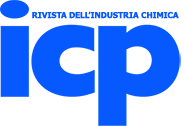Three new books in Chemical Engineering published by Elsevier

Elsevier announced the publication of three new books in the area of Chemical Engineering.
Blast Furnace Ironmaking: Analysis, Control, and Optimization
by Ian Cameron, Mitren Sukhram, Kyle Lefebvre and William Davenport
This book uses a fundamental first principles approach to prepare a blast furnace mass and energy balance in Excel™. Robust descriptions of the main equipment and systems, process technologies, and best practices used in a modern blast furnace plant are detailed. Optimization tools are provided to help the reader find the best blast furnace fuel mix and related costs, maximize output, or evaluate other operational strategies using the Excel™ model that the reader will develop. The first principles blast furnace Excel™ model allows for more comprehensive process assessments than the ‘rules of thumb’ currently used by the industry.
by Angelo Basile, Alfredo Cassano and Navin Rastogi
This book covers the important aspects of reverse osmosis, forward osmosis, and their combination in integrated systems, along with their specific and well-established applications. The book offers an overview of recent developments in the field of forward and reverse osmosis and their applications in water desalination, wastewater treatment, power generation and food processing. General principles, membrane module developments, membrane fouling, modeling, simulation and optimization of both technologies are also covered. The book’s ultimate goal is to support the scientific community, professionals and enterprises that aspire to develop new applications.
Biovalorisation of Wastes to Renewable Chemicals and Biofuels
by Navanietha Krishnaraj Rathinam and Rajesh Sani
This book addresses advanced technologies for converting waste to biofuels and value-added products. Biovalorisation has several advantages over conventional bioremediation processes as it helps reduce the costs of bioprocesses. Examples are provided of several successfully commercialized technologies, giving insight into developing, potential processes for biovalorisation of different wastes. Different bioprocess strategies are discussed for valorising the wastes coming from the leather industry, olive oil industry, pulp and paper, winery, textile, and food industries, as well as aquaculture.
A section on biorefinery for hydrocarbons and emerging contaminants is included to cover concepts on biodesulfurization of petroleum wastes, leaching of heavy metals from e–waste, and bioelectrochemical processes for CO2.










